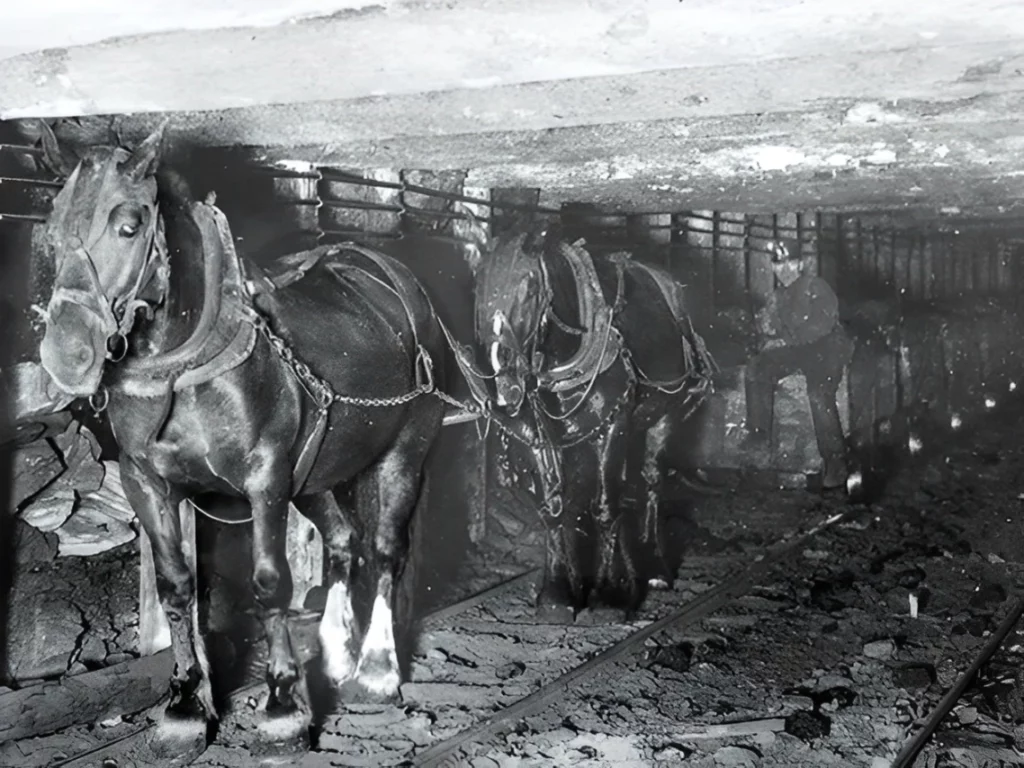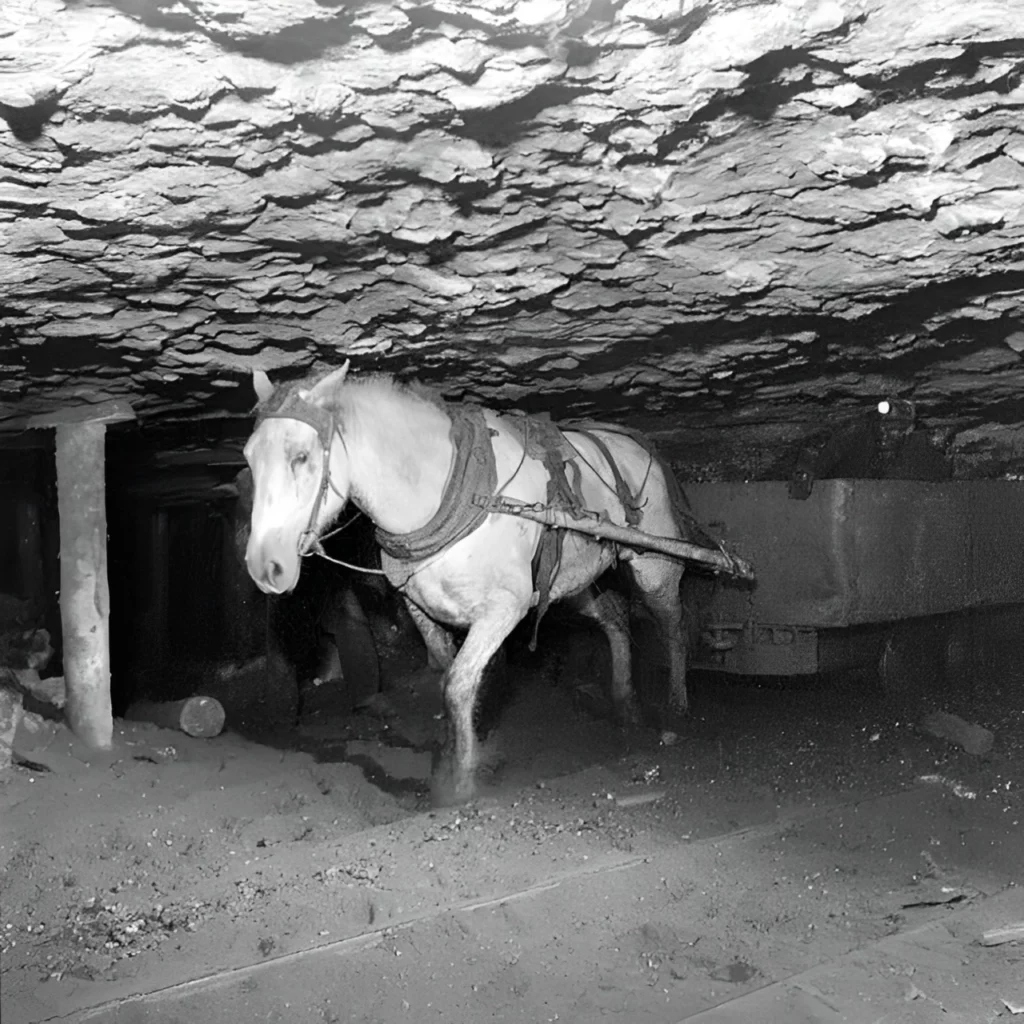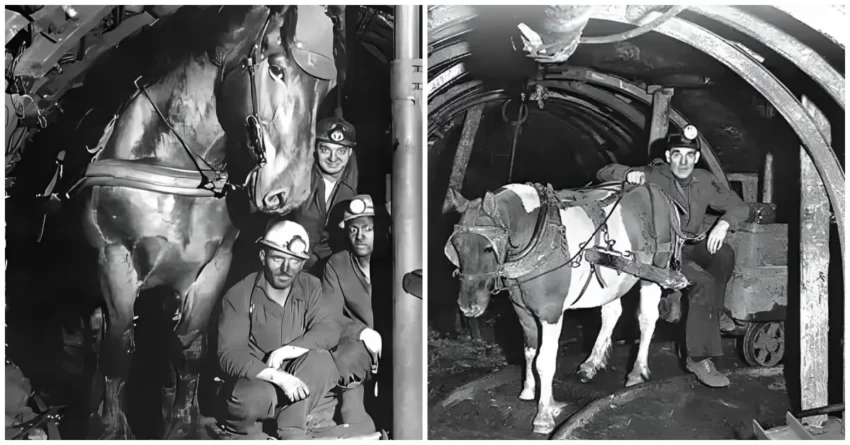Pit ponies were horses and ponies used in coal mines for centuries, working in darkness and carrying heavy loads underground. The first recorded use of ponies in British mines dates back to 1750 in the Durham coalfield. Their use increased after the Mines and Collieries Act of 1842, which banned women and children under ten from working underground. This led to a greater reliance on animals to haul coal wagons through the narrow tunnels. At their peak in 1913, around 70,000 ponies were working in British coal mines. They were chosen for their small size and strength, making breeds like Shetland ponies ideal for the difficult working conditions underground.

These horses and ponies endured a harsh and exhausting life. Many spent almost their entire lives underground, only coming up to the surface for medical treatment or rare breaks. They worked shifts of up to eight hours, pulling multiple heavy coal wagons through the mines. Despite the difficult conditions, pit ponies showed intelligence and a strong sense of routine. They knew when their shifts ended and often found their way back to the stables without guidance. Though their work was hard, they sometimes refused to move if overloaded, showing they were aware of their limits and what they could endure.

Concern for the welfare of pit ponies led to some changes in their treatment. The Coal Mines Regulation Act of 1887 introduced the first nationwide rules to protect horses underground. This law required that tunnels be made big enough to prevent injuries to the ponies. Later, the Coal Mines Act of 1911, known as the ‘Pit Ponies’ Charter,’ provided better working conditions and stronger protections for the animals. These laws were important because they recognized the ponies’ needs and helped improve their lives in the mines, even if the work remained physically demanding.

With the rise of technology in the mid-20th century, the need for pit ponies began to decline. Machines slowly replaced the ponies, reducing the number of horses working underground. However, they were still used in some British mines until the 1980s. In 1984, the National Coal Board reported that 55 ponies were still in use, mainly in Northumberland. The last known mining horse in Britain, named Robbie, retired in 1999 from a mine near Pontypool. This marked the end of an era, as coal mining no longer depended on horses for transport.

The contributions of these ponies and their handlers have not been forgotten. Various memorials have been created to honor their hard work and sacrifices. One notable tribute is the sculptural composition called “Konogon” at the Krasnaya Gorka Museum Reserve in Kemerovo, Russia. This monument recognizes the difficult lives of both the miners and their horses. Such memorials serve as reminders of the struggles faced by the animals and the deep connection they shared with their human companions underground.

The story of the pit ponies is an important part of industrial history. It shows the difficulties faced by both humans and animals in the dangerous environment of coal mines. These ponies played a crucial role in mining operations for over two centuries, displaying great strength, intelligence, and endurance. Their legacy highlights the need for humane treatment of working animals and reminds us of the sacrifices made during the rise of industrial progress. Though their time in the mines has ended, their memory continues to be honored through history and monuments dedicated to their service.
